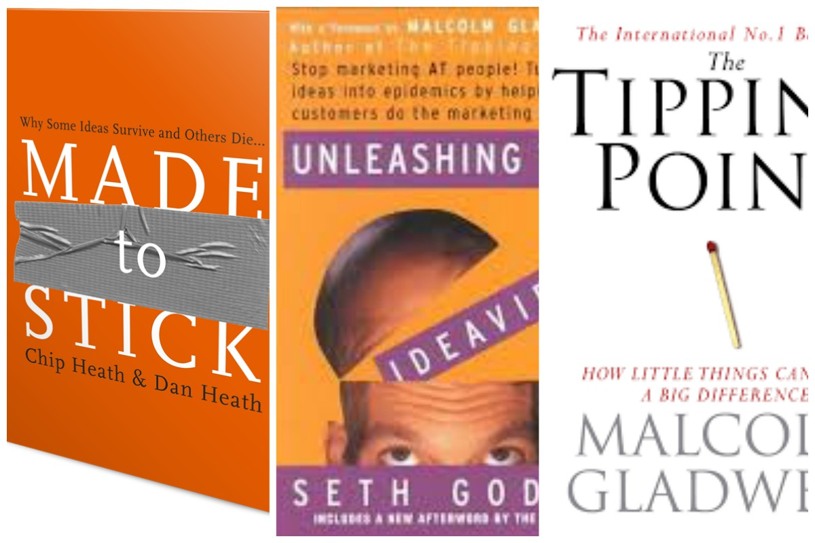This is the second of our Saturday series of inspirational and unconventional thoughts and ideas from all over the world and internet.
Some ideas survive longer and win than others. Why? There is a number of parameters responsible for making an idea sticky. Let's explore few practical wisdoms on making ideas sticky.
[su_divider top="no" text=" " divider_color="#e8e7e6" link_color="#edde29" size="1" margin="10"][/su_divider]
Chip Heath and Dan Heath in 'MADE to STICK: Why Some Ideas Survive and Others Die' illustrates a framework called six core principles of any idea that stick around:
- Simplicity. Prioritize and exclude relentlessly to find your core message.
- Unexpectedness. For ideas to endure, generate interest and curiosity with unexpected information.
- Concreteness. To make ideas clear, explain them in terms of human actions and sensory information.
- Credibility. To build confidence, help people test your ideas for themselves.
- Emotions. To get people to care about your ideas, make them feel something.
- Stories. Tell stories that help your audience mentally rehearse for real experiences that might happen in the future.
[su_divider top="no" text=" " divider_color="#e8e7e6" link_color="#edde29" size="1" margin="10"][/su_divider]
Seth Godin in Unleashing IdeaVirus: Five Things Idea viruses Have In Common
- The most successful idea viruses sometimes appear to be accidents, but it is possible to
- Dramatically increase the chances your ideavirus will catch on and spread.
- An ideavirus adores a vacuum. (This is a big idea. Read on to see what I mean).
- Once an ideavirus spreads, it follows a lifecycle. Ignore the lifecycle and the ideavirus dies out. Feed it properly and you can extend its useful life and profit from it for a long time.
- Ideaviruses are more than just essays and books. Everything from new technology to new ways of creating new products are winning because of intelligent seeding by their creators.
- Viral marketing is a special case of an ideavirus. Viral marketing is an ideavirus in which the carrier of the virus IS the product.
There are five important principles that someone unleashing an ideavirus should understand—principles that marketers pursuing old-fashioned word of mouth didn’t use:
- An idea merchant understands that creating the virus is the single most important part of her job. So she’ll spend all her time and money on creating a product and environment that feeds the virus.
- An idea merchant understands that by manipulating the key elements of idea propagation—the velocity, the vector, the smoothness, the persistence and the identification of sneezers—she can dramatically alter a virus’s success.
- The idea merchant remembers that digital word of mouth is a permanent written record online, a legacy that will follow the product, for good or for ill, forever.
- An idea merchant realizes that the primary goal of a product or service is not just to satisfy the needs of one user. It has to deliver so much wow, be so cool, so neat and so productive that the user tells five friends. Products market themselves by creating and reinforcing ideaviruses.
- An idea merchant knows that the ideavirus follows a lifecycle and decides at which moment to shift from paying to spread it, to charging the user and profiting from it.
[su_divider top="no" text=" " divider_color="#e8e7e6" link_color="#edde29" size="1" margin="10"][/su_divider]
Malcolm Gladwell in Tipping Point: The tipping point is the biography of an idea, and the idea is very simple. It is that the best way to understand the emergence of fashion trends, the transformation of unknown books into bestsellers, or the rise of teenage smoking, or the phenomena of word of mouth, or any number of the other mysterious changes that mark everyday life is to think of them as epidemics. Ideas and products and messages and behaviors spread just like viruses do.
The three rules of the Tipping Point- the law of few, the Stickiness Factor, the Power of Context.
- Social epidemics are driven by the efforts of a handful of exceptional people. The success of any kind of social epidemics is heavily dependent on the involvement of people with a particular and rare set of social gifts. It’s things how sociable they are, or how energetic or knowledgeable or influential among their peers.
- The stickiness factor says that there are specific ways of making a contagious message memorable; there are relatively simple changes in the presentation and structuring of information that can make a big difference in how much of an impact it makes.
- Epidemics are strongly influenced by their situation by the circumstances and conditions and particulars of the environment in which they operate.

